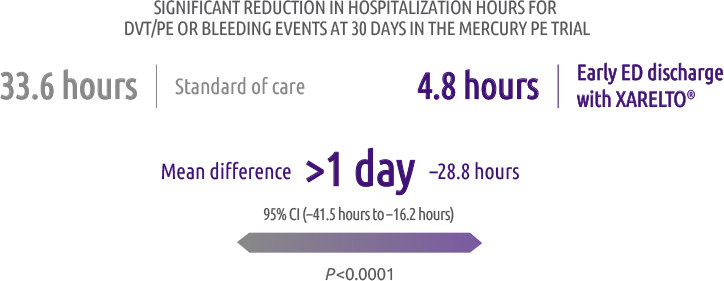For US Healthcare Professionals
~98% of patients did not experience another DVT/PE*3
EINSTEIN PE
2.1% (50/2419) with XARELTO®
versus
1.8% (44/2413) with enoxaparin and warfarin/VKA
HR (95% CI): 1.12 (0.75-1.68)2
EINSTEIN PE
2.1% (50/2419) with XARELTO® versus
1.8% (44/2413) with enoxaparin and warfarin/VKA
HR (95% CI): 1.12 (0.75-1.68)2
EINSTEIN DVT
2.1% (36/1731) with XARELTO®
versus
3.0% (51/1718) enoxaparin and warfarin/VKA
HR (95% CI): 0.68 (0.44-1.04)1
EINSTEIN DVT
2.1% (36/1731) with XARELTO® versus
3.0% (51/1718) enoxaparin and warfarin/VKA
HR (95% CI): 0.68 (0.44-1.04)1
*Patients were followed for an average length of treatment of 208 days in clinical studies.


